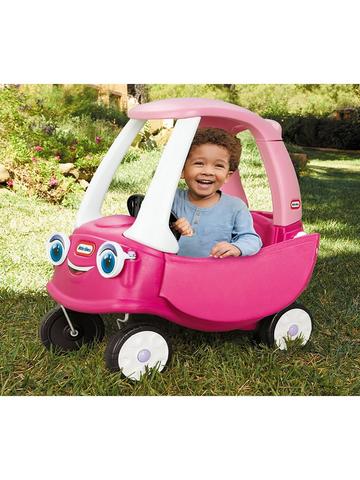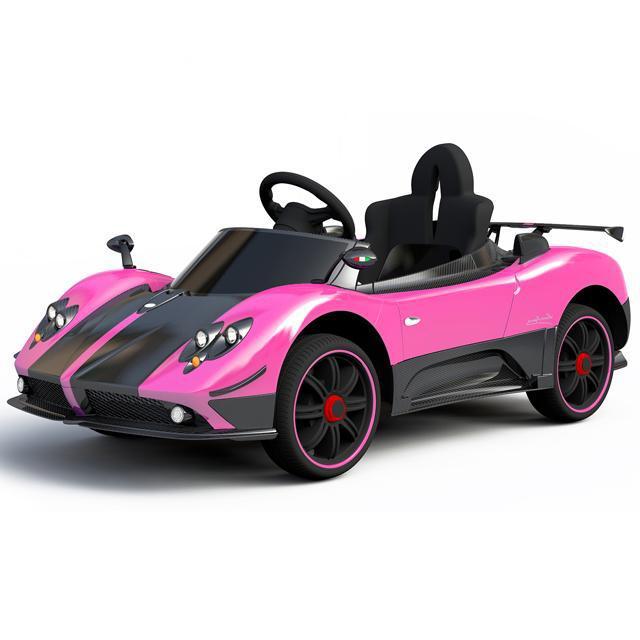Best Advice For Deciding On Kids Ride On Cars
What Should I Know About The Battery Life And Charging Time Of An Electric Kid Ride-On Car?Knowing the charging duration and battery life for an electric ride on kids' car will help you to ensure uninterrupted playtime. Here's everything you need to be aware of - Type of battery
The majority of electric vehicles designed for kids use rechargeable batteries, which are typically lithium-ion or lead acid batteries. Lithium ion batteries offer longer battery life than lead acid and are charged faster.
Battery Capacity
The time of operation for a ride-on car is dependent on the battery's capacity. This is measured in amp-hours, or Watt-hours. Larger capacity batteries offer longer time to play before needing to recharge.
Run Time -
This is the amount of time an electric ride-on is able to run continuously after one charge. It can differ based on factors such as the battery capacity, motor power, terrain, as well as the weight of the driver.
The average run time for electric ride-on vehicles is between 30 minutes and 2 hours. However, certain batteries with high capacity might have longer time-to-run.
Charging Time
The charging time is the time it takes to fully charge the battery after it is depleted. The charging time can differ based upon the capacity of the battery, the specifications of the charger and charging method.
On average, charging times for electric ride-on vehicles vary between 8 and 12 hours for a full charge. However, some models may provide faster charging times, specifically with lithium-ion batteries.
Follow the charging guidelines that are provided by the manufacturer in order to ensure battery safety and longevity. The battery's overcharging or undercharging will alter its performance and extend its lifespan.
Charge Method Charge Method
Chargers that charge electric rides are typically plugged into the standard outlets in your home. Certain models might have quick charging or even a smart charger that monitors the battery's charge status and adjusts charging rates according to the condition of the battery.
To ensure that the battery is not damaged or the electrical system make sure that the charger as well as the port of the ride-on are compatible.
Additional Batteries
Certain electric vehicles offer the option of purchasing additional batteries or batteries to extend play time. A supply of batteries lets you swap out depleted batteries for fully charged ones, which reduces the amount of time between sessions.
Understanding the life of the battery in your electronic kids' ride-on car as well as its charging time will allow you to ensure that your child has exciting and fun adventures while exploring their world. The battery's performance and longevity can be improved by constantly charging the batteries and following correct charging procedures. Take a look at the recommended McLaren kids car for website recommendations including electric rideons, cars pedal car, remote control childrens electric cars, car for toy, ride on digger, toy in car, ride a toy, childrens electric ride on, electric car ride, digger ride and more. .

How Can Kids Car Models Be Used Indoors And Outdoors?
Outdoors or indoors, children automobiles are designed to function in a variety of circumstances and in different environments. The Indoor Use Cars differ from the Outdoor Use Cars.
Dimension and weight - Cars that are designed for indoor use tend to be lighter and smaller which allows them to be more comfortable in tight areas like hallways, living rooms or playrooms. They are compact enough to maneuver around tight corners and narrow passageways without causing damage to furniture or walls.
Low Ground Clearance - Indoor use cars have low ground clearances to avoid getting stuck or getting caught up upon obstacles like rugs, carpets, or thresholds. This guarantees smooth and continuous movement across indoor surfaces without risk of getting stuck or tipped over.
Smooth Wheels The wheels of indoor vehicles are typically composed of smooth materials such as plastic or rubber. This gives traction and grip for smooth surfaces such as flooring made of hardwood, laminate floors, or tiles. They are designed to reduce sound and prevent scratching of indoor surfaces.
Limited Speed - For indoor use, vehicles typically are slower than usual to ensure they can be safely operated and controlled in narrow areas. This will help prevent collisions or accidents with furniture, walls or any other indoor obstructions.
Outdoor Use Cars -
Durable Construction – Cars that are designed for outdoor use are constructed with robust materials. They are made of tough plastics or metals to endure the harsh elements outdoors, such sunlight, humidity and temperature fluctuations. They are more durable against wear and tear resulting from exposure to outdoor conditions.
Higher Ground Clearance - Outdoor use cars have higher ground clearance to maneuver through uneven terrain, bumps, or obstacles encountered outdoors. This allows them to traverse rough surfaces like gravel, asphalt dirt, grass, or even dirt without getting stuck or damaged.
Traction Tires - The tires that are used on outdoor cars often include treads or patterns that are designed to increase the grip and traction of vehicles on roads which are slippery or uneven. This helps to maintain control and stability when driving over rough terrain.
Weather Resistant - For outdoor use, cars can include components that are resistant to damage from environmental elements or moisture, such as waterproof casings, sealed electronics and even waterproofed ones. The car is able to be exposed to mud, rain and puddles, with no loss of performance.
Higher Speed - Outdoor use cars usually have faster maximum speeds to accommodate open spaces and longer distances that are often encountered in outdoor environments. This lets children experience an exciting and thrilling journey when they are exploring the outdoors.
In considering these design characteristics and features, parents may select a car for children that best fits their requirements for use and the surroundings where they'll use it, whether inside or out. Parents can ensure that your child's safety enjoyable, memorable, and long-lasting experience. Follow the recommended read more about Mercedes kids car for website tips including digger ride, toy car, two seater electric cars, electric ride on, electric car ride, pedal car, a toy car, car toy car toy, two seater electric cars, toy car and more. .

Where Can I Find Information On The Experience Of Parents Using Ride-On Car Brands?
Utilize various online resources to research and analyze ride-on vehicle models. Below are some guidelines to help you evaluate and look into ride-on car models.
Visit online retailers like Amazon.com, Walmart.com, and Target.com which allows you to read reviews from customers on the items they've purchased. Choose ride-on models that have a lot of positive reviews and ratings.
Manufacturer Websites -
Learn more about ride-on automobiles on the official website of the manufacturers. On their websites, a few manufacturers provide reviews and testimonials from their customers.
Parenting Forums and Communities Parenting Forums and Communities
Join forums for parents or online communities to share your experience and recommend ride-on car models. Reddit BabyCenter and The Bump are all websites with parenting forums on which you can read about other parents' experiences and ask questions.
Toy Review Websites
There are toys and ride on vehicle reviews on review blogs and websites. They usually offer detailed comparisons and reviews based on safety, durability and playability.
YouTube Reviews -
Look up reviews for ride-on vehicles on YouTube, where content creators and enthusiasts share video reviews, demonstrations, and unboxing experiences. The video reviews you watch can provide a great picture of the ride-on vehicles' performance in real-life scenarios.
Social Media
Social media sites like Facebook, Instagram and Twitter let you follow toy manufacturers parents, parenting experts, and parenting groups. These platforms provide a wealth of products reviews, feedback from customers, as well as recommendations from other parents.
Consumer Reports and Product Testing Organizations
Review consumer reports and testing organizations like Consumer Reports, Which?, or Good Housekeeping for unbiased reviews and ratings for ride-on vehicle models. These organizations conduct rigorous tests and evaluations of product performance and quality.
Word of mouth
You can ask friends, family or even other parents to share their opinions regarding ride-on cars, according to the cars they have used. Referrals are an excellent way to get first-hand information regarding the quality of a product.
When researching different ride-on cars take into consideration safety features, the longevity of the car, ease in assembly, battery lifespan as well as customer support. Look for brands that have been around for some time and are reliable as demonstrated by customer and parent reviews. Check out the top rated kids cars kidscars.co.uk news for site advice including toy cars toy car, pedal car, toy with car, kids electric cars, toy a car, toy with car, 2 seater electric cars, toy and car, ride on digger, toy and car and more. .
